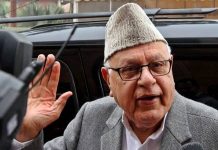
Perhaps it is a symptom of Pakistani cinema’s impending resurgence that Zinda Bhaag, a film that won four awards at the prestigious Mosaic International South Asian Film Festival in Toronto and is expected to break box-office records, couldn’t release as planned on 6 September. There was too large a backlog of unreleased films. After years of decline, 2013 has seen 23 releases already and several more are yet to come. Many of these, like Zinda Bhaag, aren’t, as actor Naseeruddin Shah says, the “thoroughly Z-Grade movies” that Lollywood would churn out with moribund regularity, but honest, independent expressions of what it’s like to be a Pakistani in the 21st century. It’s enough for the phrase ‘new wave’ to be bandied about.
Shah, who stars in the film — his second Pakistani venture after Khuda Kay Liye (2007) — is quick to squash all talk of a new wave. After all, reports of the industry’s renaissance surface after every film that captures the imagination. “One shouldn’t bring out the drums, saying, ‘Hey, Pakistani cinema has arrived,’” he says. “It’s a long way off, but it’s heartening that a beginning has been made.”
That beginning, says Mazhar Zaidi, the producer of Zinda Bhaag, owes a debt of sorts to Bollywood. This sounds counter-intuitive; after all, wasn’t it pirated VCRs of Indian films that killed the Urdu film industry? The bootlegs were the result of a 1965 ban on Indian films. Once the ban was lifted in 2008, it “encouraged the middle classes to actually go to the theatre”, creating overnight a new generation of filmgoers. With a multiplex culture taking hold in the cities and renewed investment in rebuilding cinemas, the infrastructure is being put in place for a resurgence, much like the one India saw in the mid-2000s.
‘Resurgence’ is possibly not the word to use, though. Writing in Dawn, columnist Shayan Shakeel prefers to call it a rebirth “from the ashes of Lollywood and the bowels of the TV industry”. The industry today bears little resemblance to the Bollywood-aping commercial film establishment of the past. The people involved, at least, are different. Almost all Pakistani films of note in the past few years have been made by first-time directors, largely graduates from television, a medium that has seen unprecedented growth of late. (Farjad Nabi and Meenu Gaur, directors of Zinda Bhaag, don’t come from television but are independent filmmakers.)
For a new wave to occur, feels Shah, it needs “a band of young crazies” to build an industry from the ground up. His experience with Zinda Bhaag was reminiscent of his salad days, “something akin to the ’70s, when the National Film Development Corporation of India was backing new filmmakers, when the budgets were tiny, the commitment great and everybody tightened their belts”. That generation was, much like the youth in contemporary Pakistan, deeply disaffected by the direction their country was taking and expressed that angst through their films. Zinda Bhaag, for instance, asks why young Pakistanis emigrate to greener pastures. It does so through an honest evaluation of what would cause so many to want to get out when they can.
New faces, however, also require guidance. During filming, Shah held a workshop to help the young cast grasp their roles better. The film also had a primarily Indian crew, led by National Award-winning cinematographer Satya Rai Nagpaul, who helped train their Pakistani counterparts. Post-production happened in Mumbai, which meant that it was edited by someone who understands the language and culture, says Zaidi. With the volatility of relations between the two countries, institutional support is far from a given, but Shah feels greater collaboration on a personal level can help the Pakistani fraternity learn from our experience. (Our industry, he adds, is too far gone to do any learning.)
For now, Zaidi hopes to release the film in India. If that were to happen, it might set a precedent for this new wave, when it comes, to be felt on both sides of the border. Either way, Zinda Bhaag sets a more important precedent: a film that can be popular without succumbing to the commercial.
ajachi@tehelka.com









